28th August 2018 4:01 am
NES Clone Fix
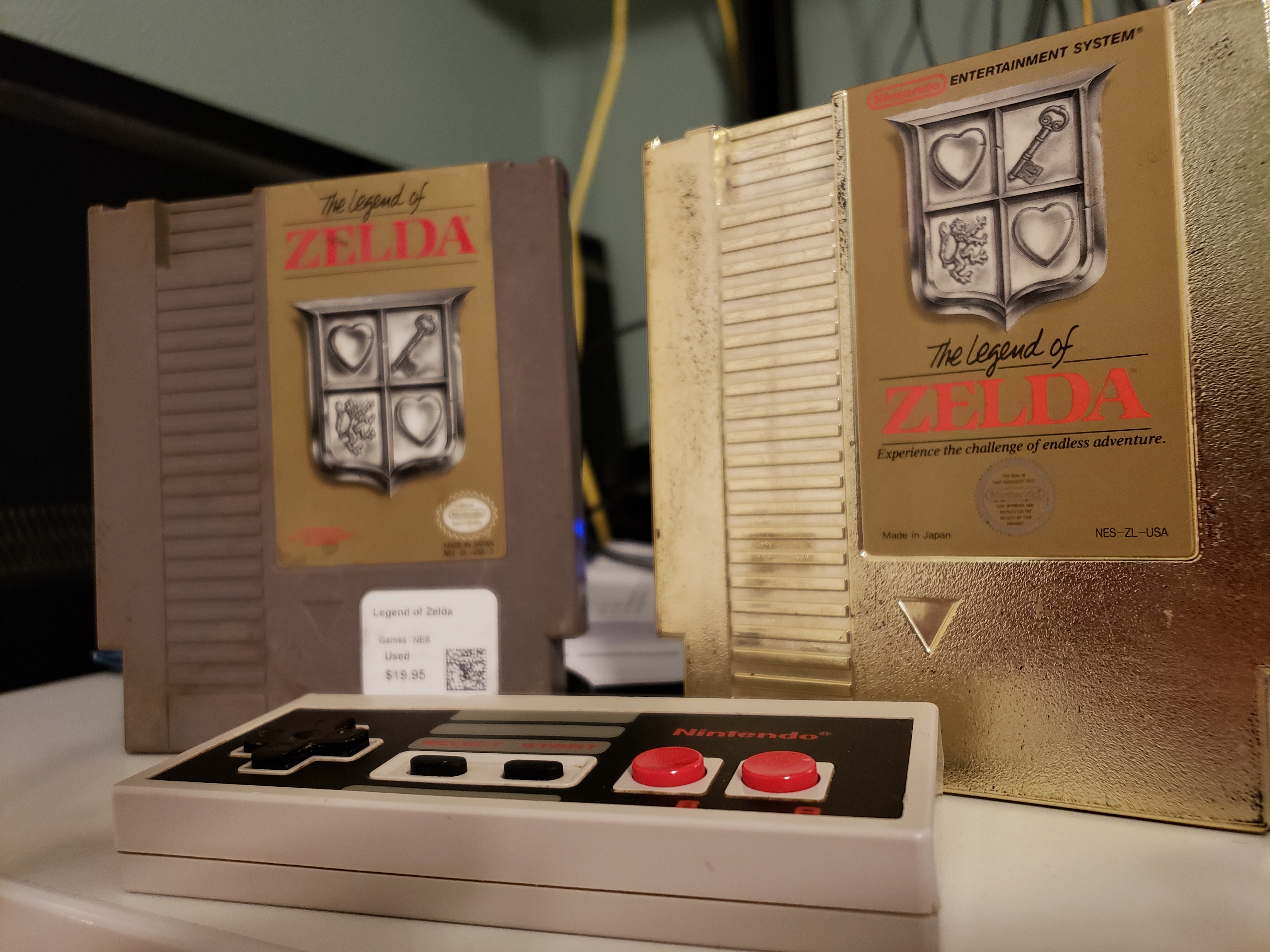
I’ve owned a Yobo NES Clone system since I was 16, it’s how I’ve played all my NES games I’ve collected over the years. One of my favorite games to play, unsurprisingly, is The Legend of Zelda. Even today it’s a mellow adventure in a quaint pixel world I can return to. Sadly, my gold cart LoZ game started to become harder to get to run, and eventually it wouldn’t run at all. No matter how much I adjusted the cart, it wouldn’t switch on.
Thus, I bought this second LoZ Cart. The grey colored re-release, since I figured I may as well have that version. The store that sold me the grey cart tested it in front of me and confirmed it to be a perfectly working cart. So I get home only to find the grey cart has the same error as my gold cart. Flick it on and my T.V reports no signal about 1 second later. My suspicions roused, I wondered if this was a problem with my NES, so I decided to break it open. It was a process I felt would be right at home being documented here.
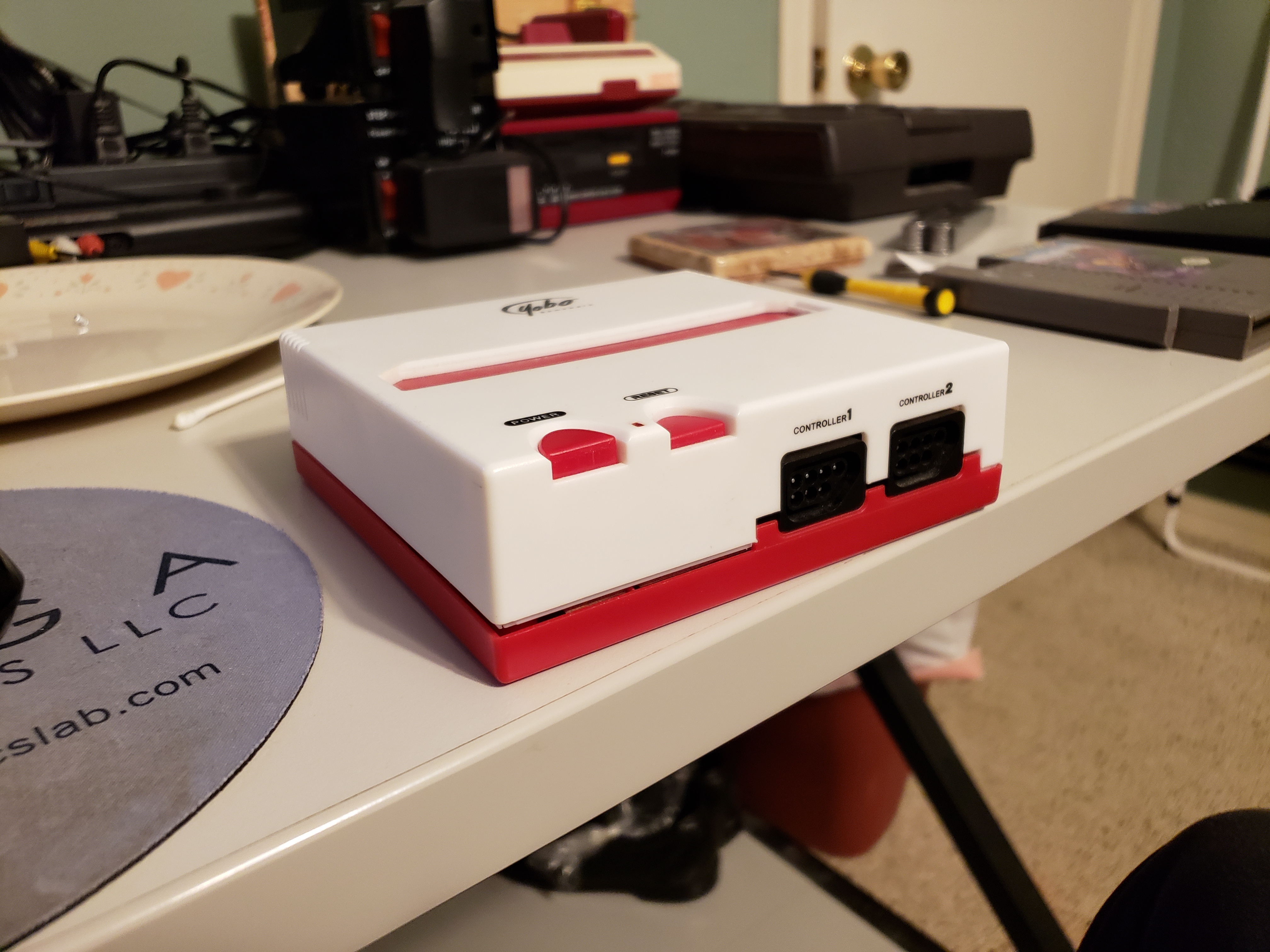
The system itself is rather small, much smaller than the first gen ‘VCR’ NES consoles. It’s also a top-loader, and like other top-loading NES consoles it has no lock-out functionality nor region-locking (Between PAL and NTSC, JP carts have a different pin layout at 60 pins instead of 72).
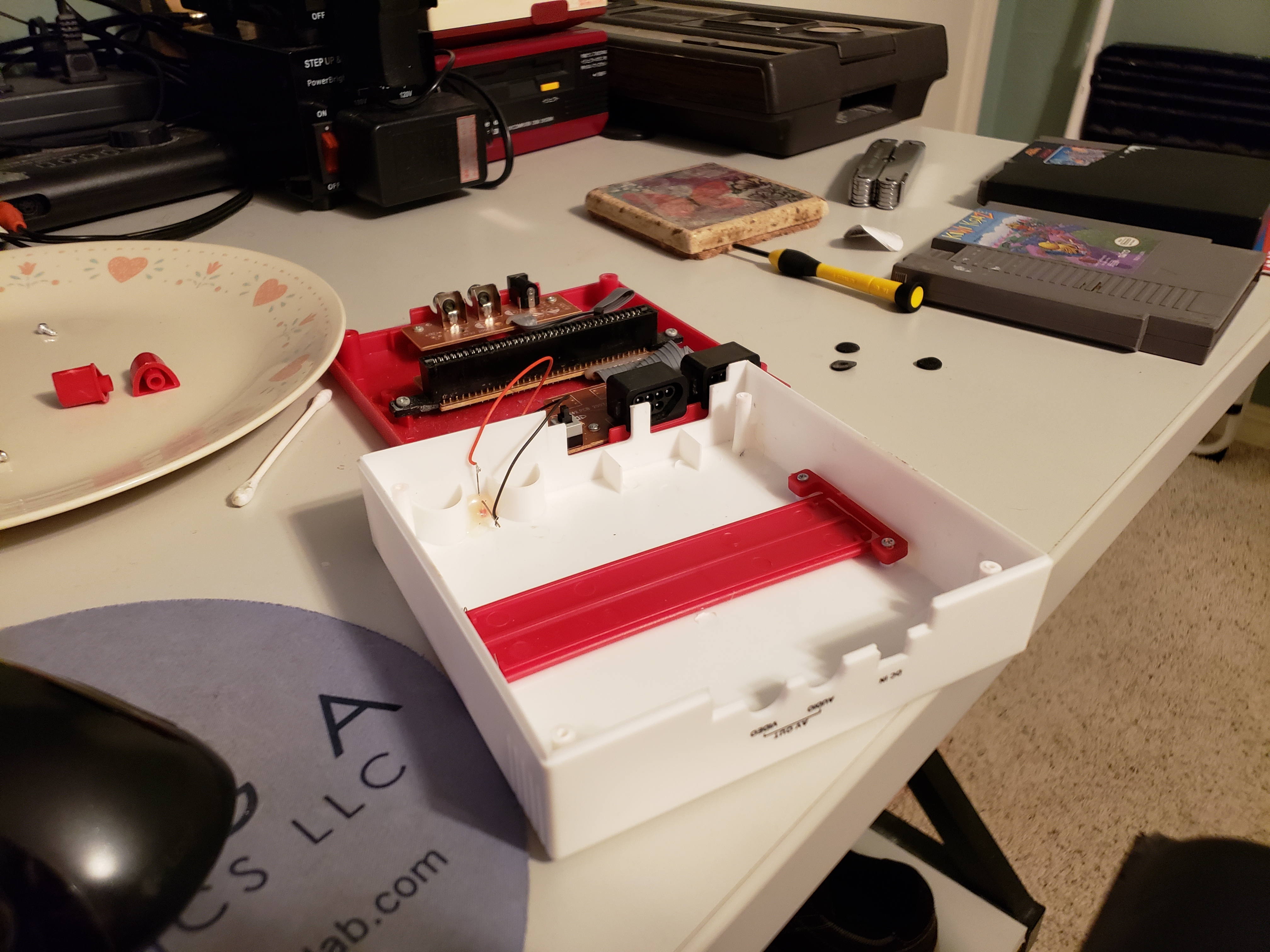
Here’s the console broken open. As an aside, it annoys me when electronics hide their case screens under rubber feet, which this did. The rubber feet are so cheap I didn’t think I’d bother putting them back on.

The craftsman ship is a little shoddy to say the least, thought I don’t imagine these things sell for 25$ because of quality. Glue is strewn about the system in place of proper solder, and it looks to be made up of 3 generic boards, as spaces for resistors and capacitors are marked on the boards with nothing inserted into the slots.
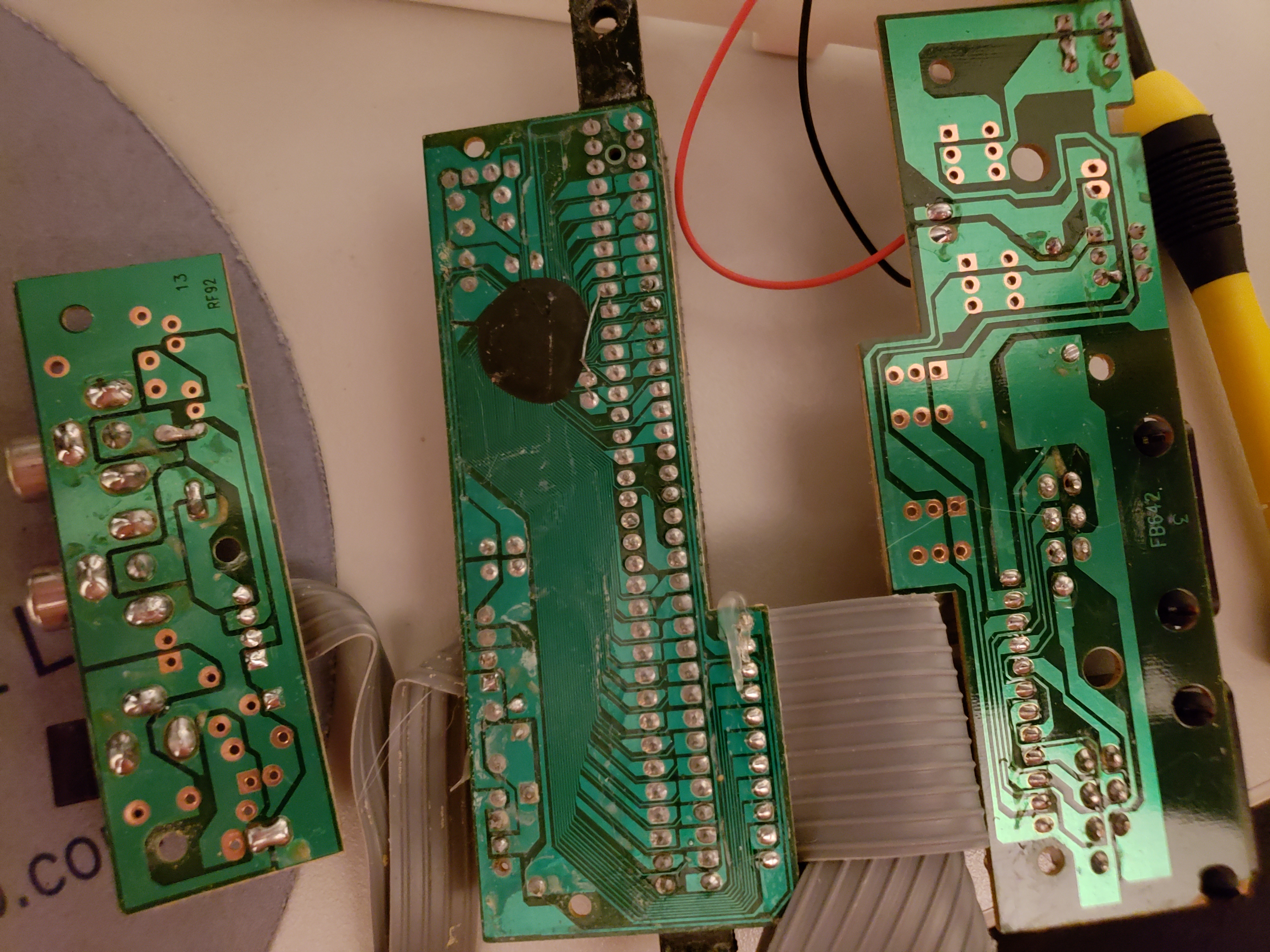
Looking at the underside of the board it looks fairly standard, not a lot to see. It’s just a printed board that’s a bit dirty. There’s a lot of dirt and what looks to be corrosion.

There’s a possibility corrosion could break a trace, though that’d more likely render the system totally inoperable, not just make select games not work. Of course, in the real world, physics can be a finicky thing. Would it be possible for a data line to be ever so slightly garbled such that it wouldn’t affect more simple games but in something like LoZ it causes problems? Probably not, though it’s still worth giving the boards a once-over with some q-tips and alcohol.
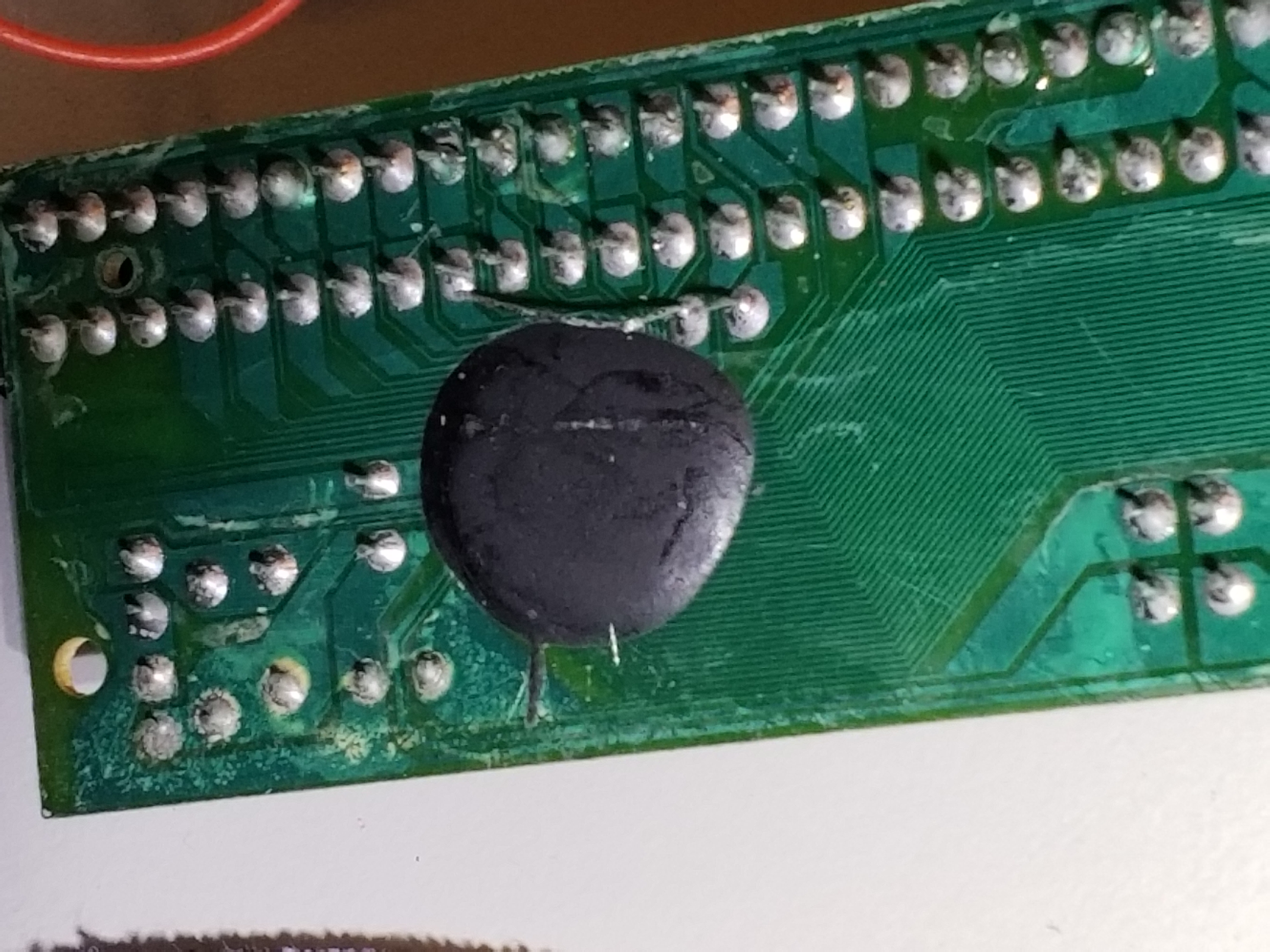
Wanting to get a better feel for the system, I needed to find where the CPU was. Where was the sound chip? RAM? The boards were bare save for a few resistors and capacitors. Looking at it, I think this black blob is where the CPU is housed, considering all the traces going into it. Most likely it houses everything, all in that tiny space. Makes you appreciate how far technology has come.
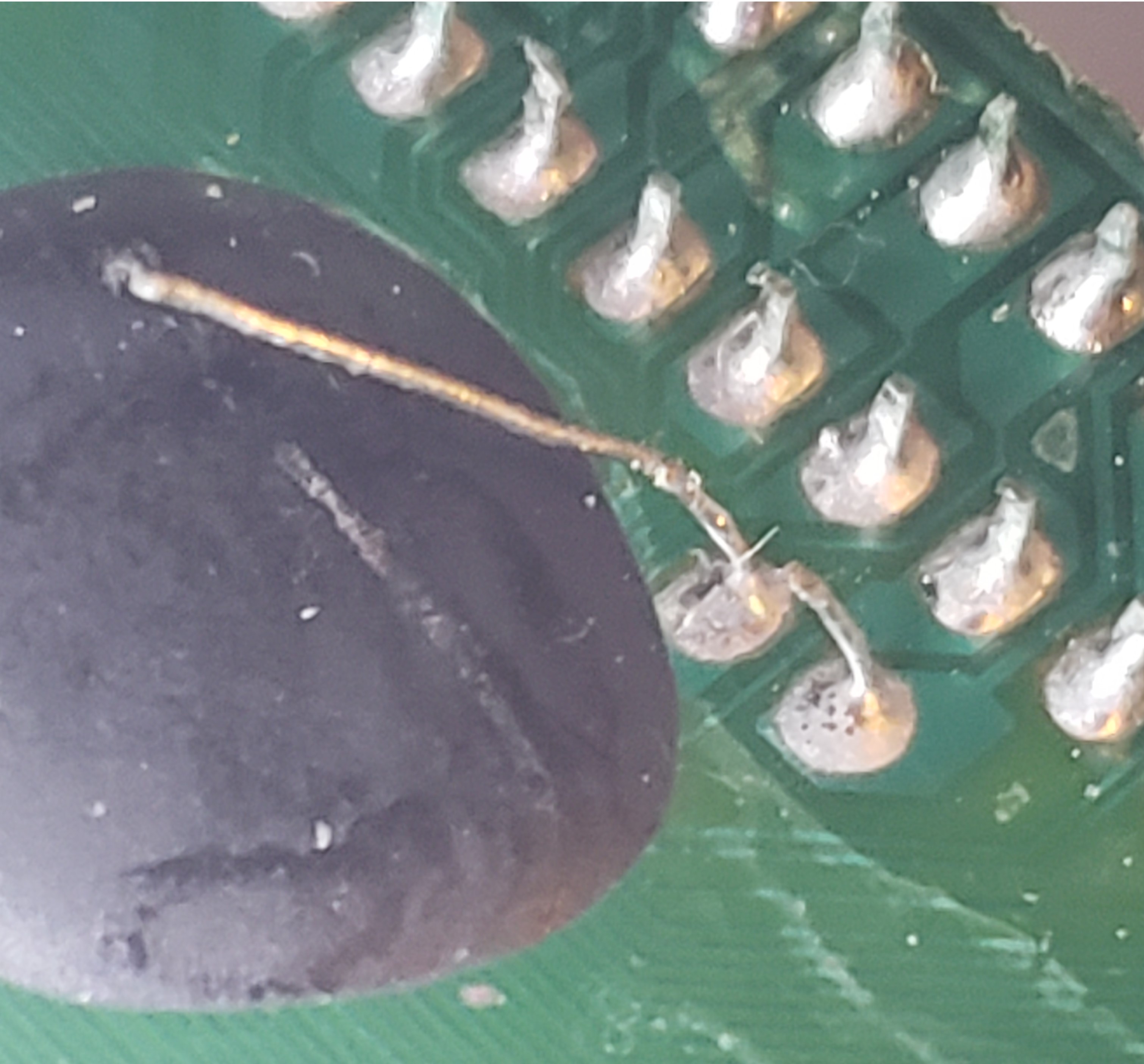
That’s when I noticed something. One of the resistors on the board had a lead that had been soldered in but not snipped off. It was even touching one of the pins for the cartridge slot which possibly meant a short. Let that be a lesson as to why you should always snip your leads when you put a component into a board.
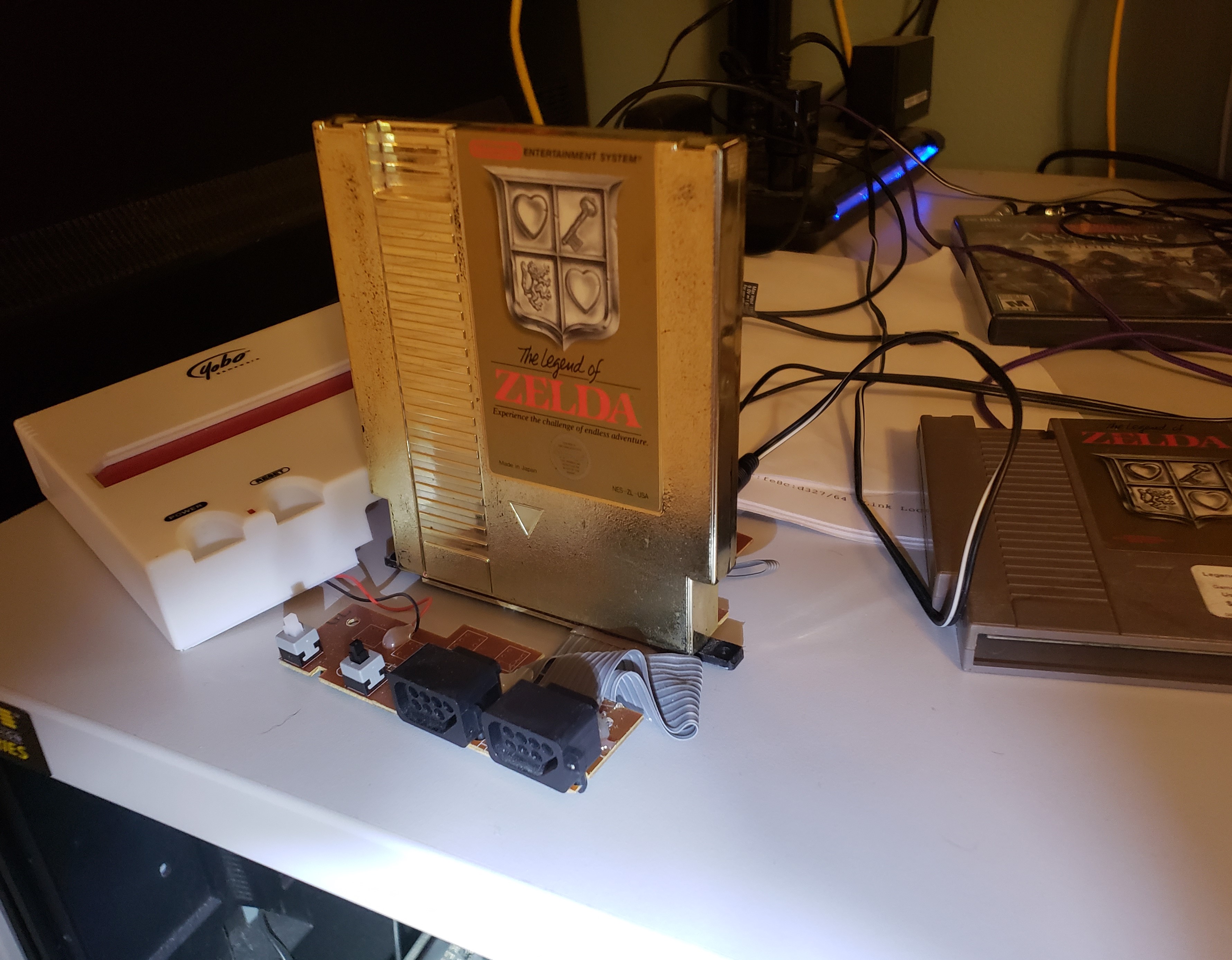
However, testing with the cart still produced the error, no video signal sent to the T.V. Not wanting to give up, I decided to break into the game cart itself to run some tests. The cart is secured with a special kind of screw, some call them ‘gamebit’ screws and others call them ‘security’ screws. Either way, they require a special kind of screwdriver I thankfully had on hand.
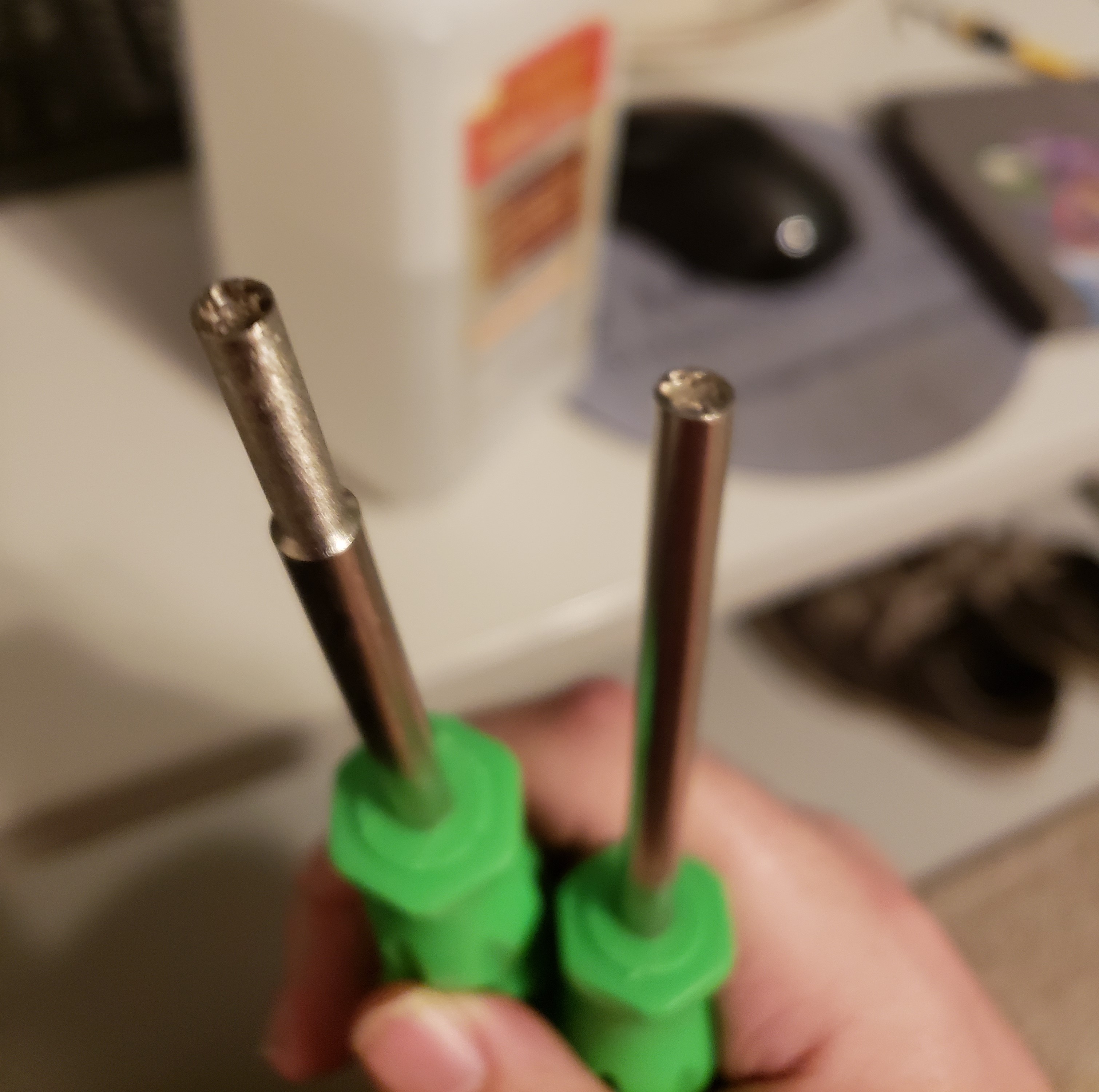
So I got the cart opened and looked inside. I did some digging around the internet to find out what each of the chips were with (hopefully) a pin diagram. From the looks of things all the traces were nice and clean, no breaks.
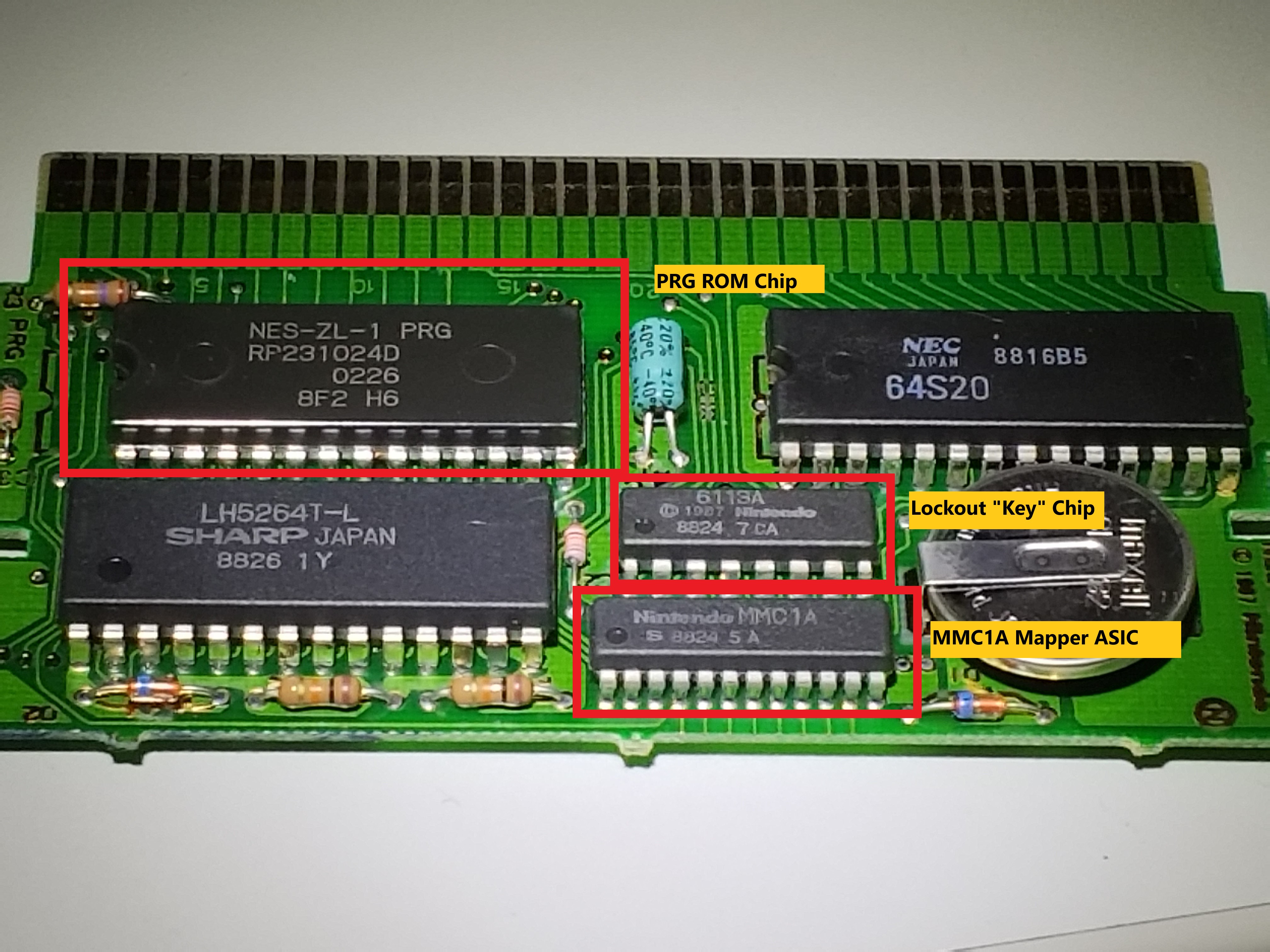
So, here’s a close-up of the game’s board. PRG ROM is connected to the CPU and holds the ‘game’ proper, so that’d be the most important part to test. Next there’s the MMC1A Mapper ASIC which was just for memory mapping tasks for the game. Something not working there would most certainly crash the game. Then there’s the ‘key’ chip, which was essentially the cart’s part of the old NES’s lockout chip handshake, essentially how the cart proved itself to be real. The last two chips I can’t really say. One of them is a 8K RAM chip to hold save games, backed up by the little watch battery you can see there. The other is a CHR ROM chip for storing graphics, meant to be hooked directly to the NES’s PPU.
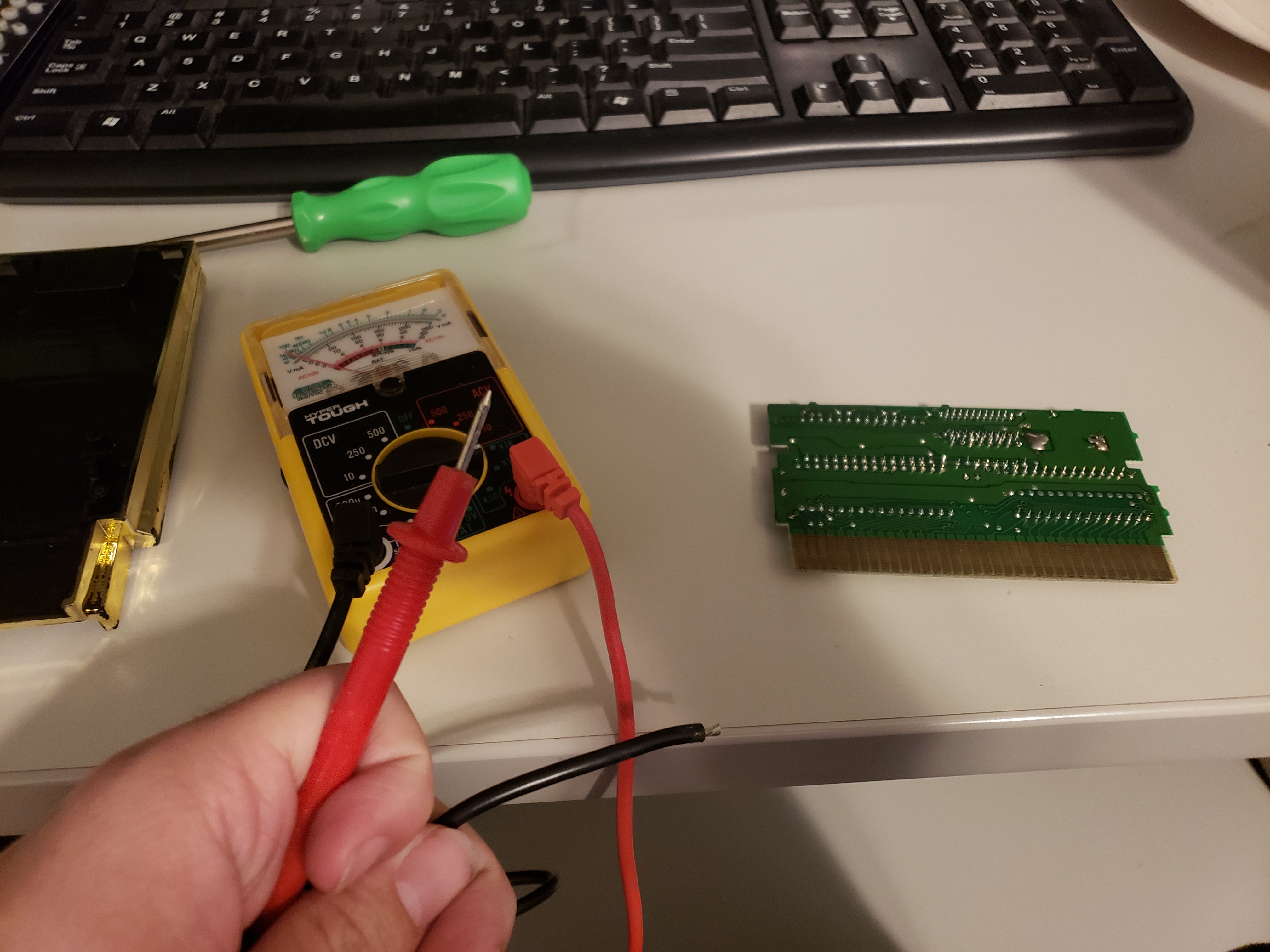
For testing, I brought out my trusty, janky, cheap Walmart multimeter for some continuity testing. I was able to snag a few diagrams from here which I have down below:


I couldn’t find a diagram for the ROM chip, but I at least knew where the main 72 pins were going, specifically which ones were tied to the PRG ROM. The testing process wasn’t exactly scientific, I was mostly looking for any glaring issues, like multiple pins that didn’t have continuity with any of the main pins. No such problem however, at least as far as I could see.
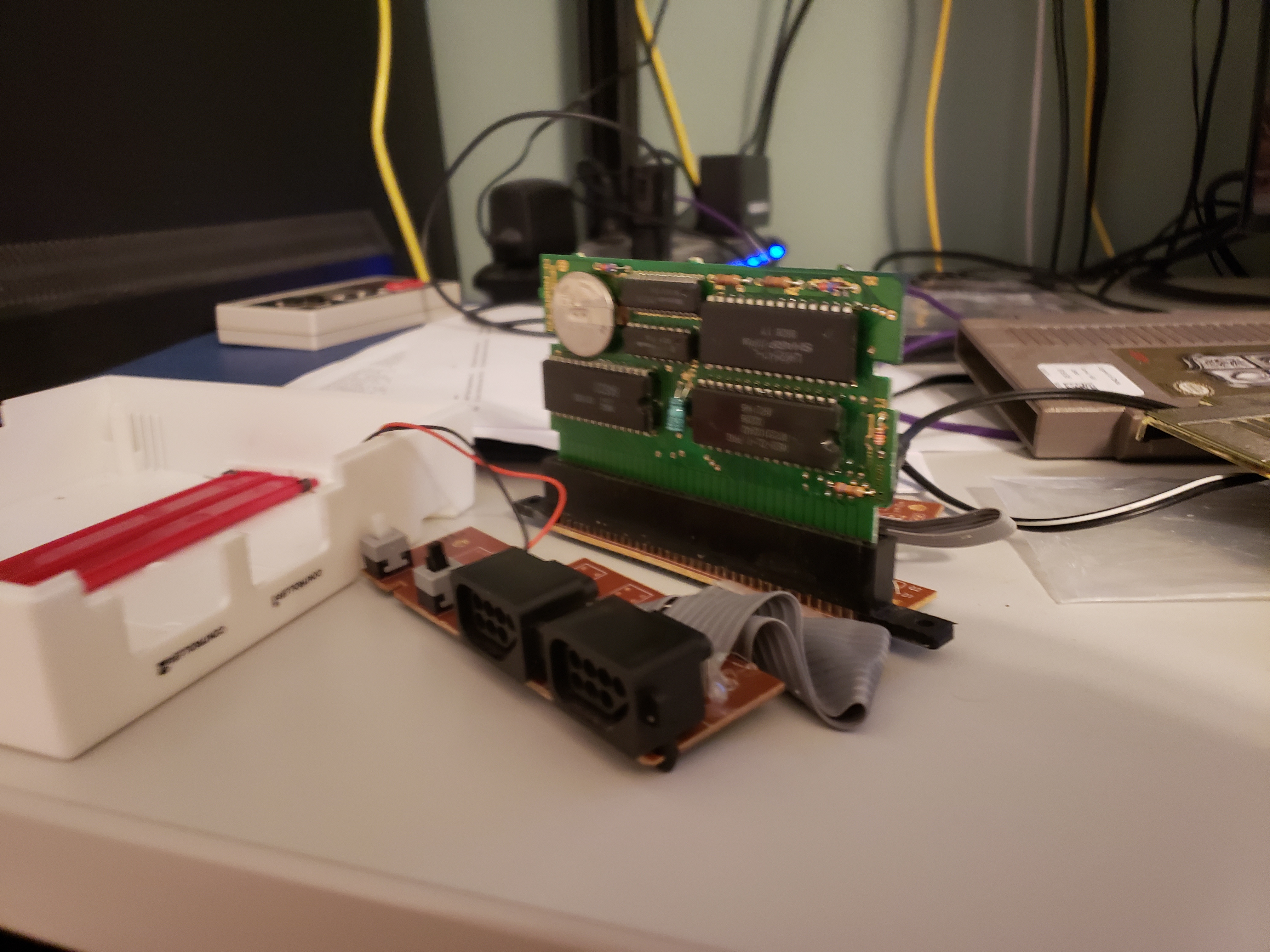
I tried once more, now with this bare-bones set up. I had a flashlight trained on the pins, making sure each and every one had good connection between system and cartridge. Even so, it still didn’t work. With the power still on, I fiddled with the cartridge a bit, when suddenly…
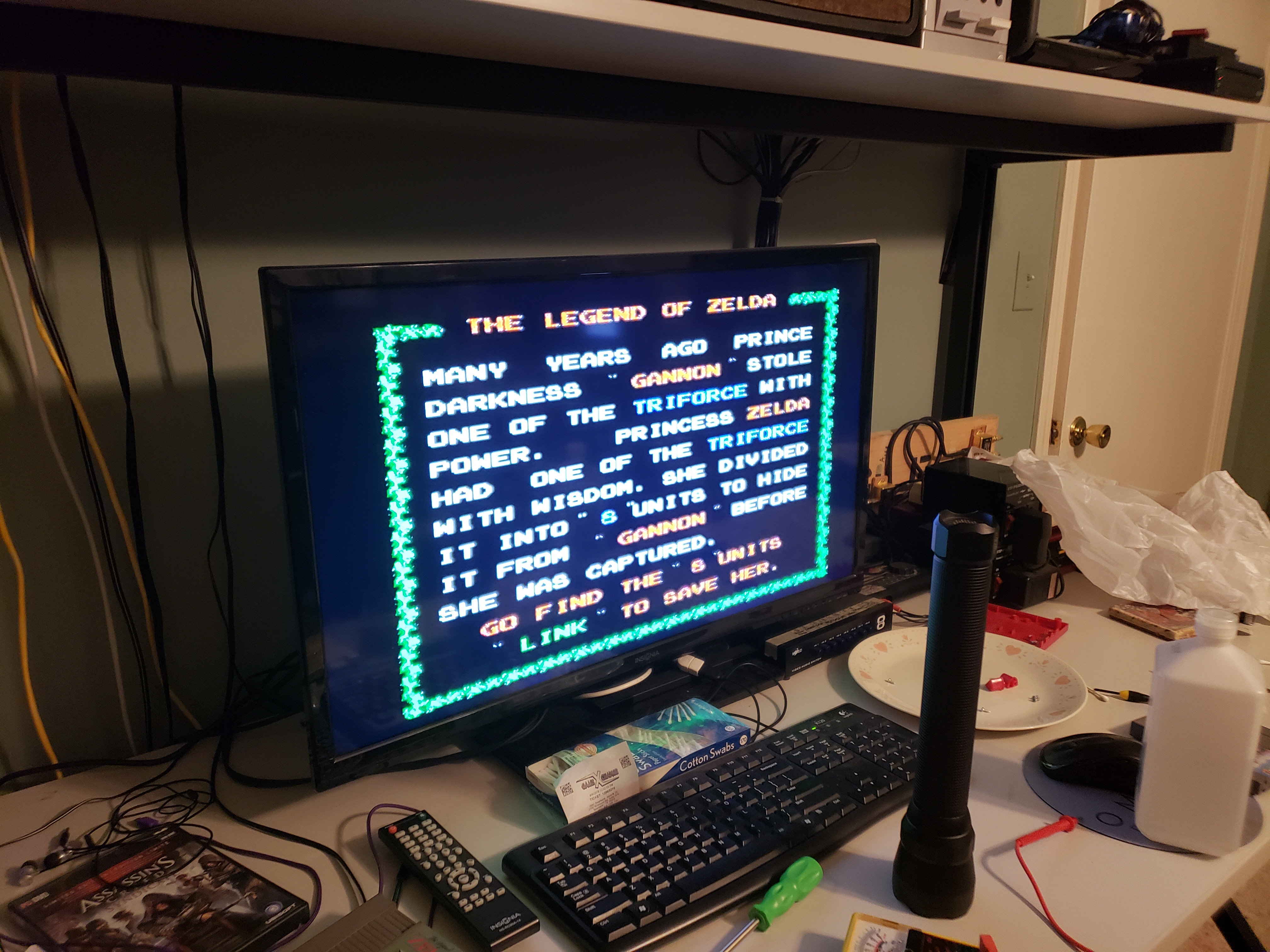
The game suddenly sprang to life. As it turns out, the cartridge just needed a good jostling. I tested with the other cart, the grey one. Insert, switch on, jostle a little, and it’d work, very repeatable. So the consistency of the solution was nice, but it makes me feel like my console is on its last legs.
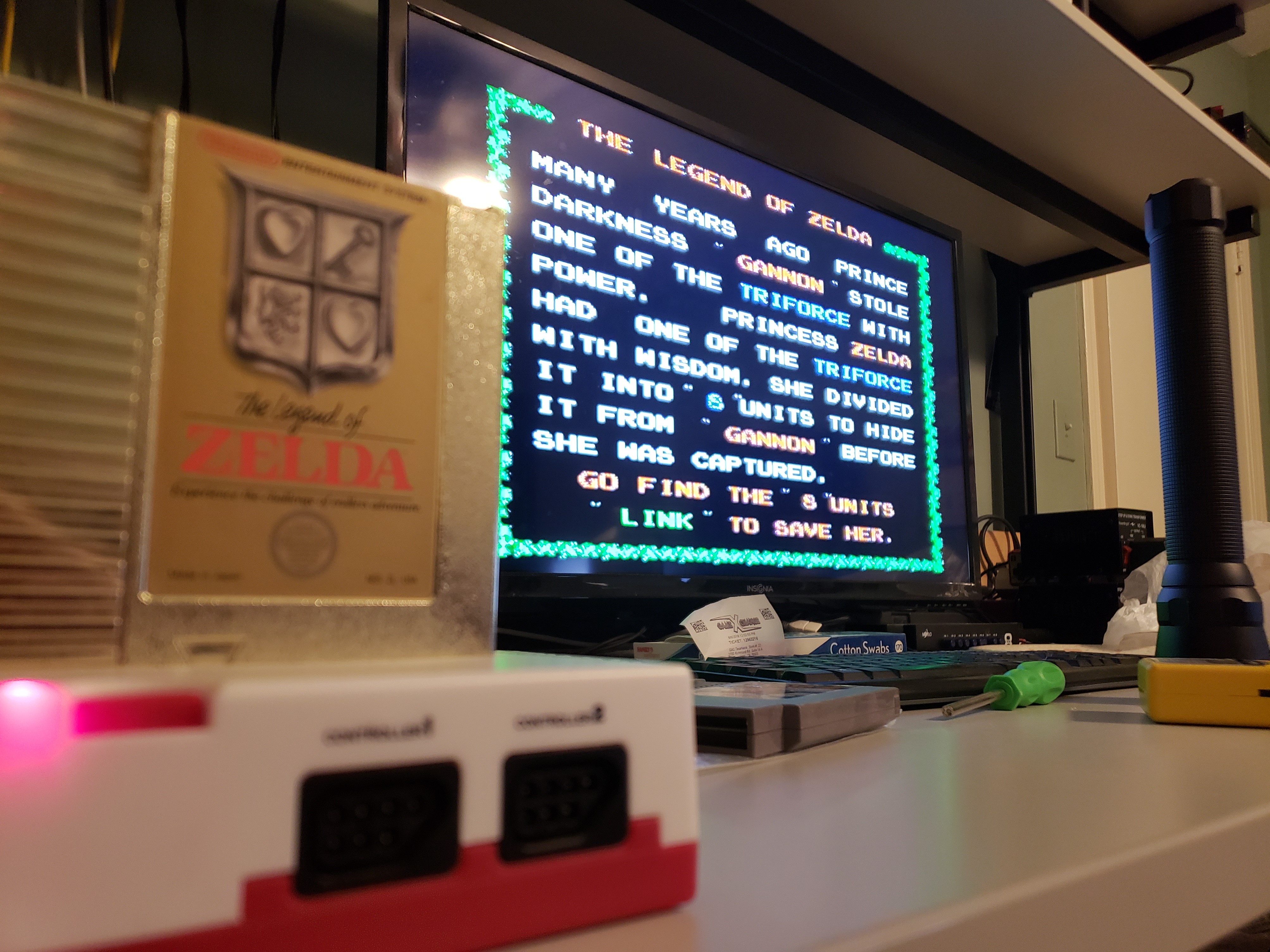
Still, it’s good some of the games that have seemingly gone bad have been giving new life now that I’ve figured out it was a problem with the system. Still, what that problem could be remains a mystery. The hardware running the game is so tiny, under that black blob of rubber that it’d be nigh impossible to properly diagnose. It’s almost like a specific pin needs to be temporarily disconnected and reconnected after power on. hence the need for jostling. Maybe the security pins, though I’d imagine for a top loader (since there’s no lockout chip), security pins would just do nothing, going to ground.
Either way, I’m happy this is at least partway solved.
~Nicko
